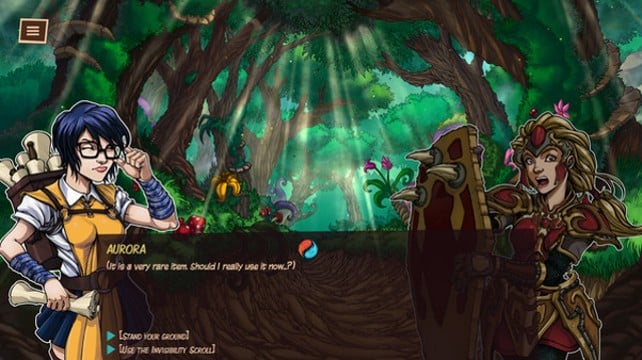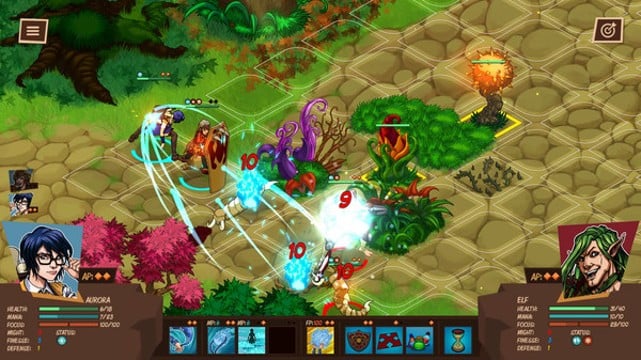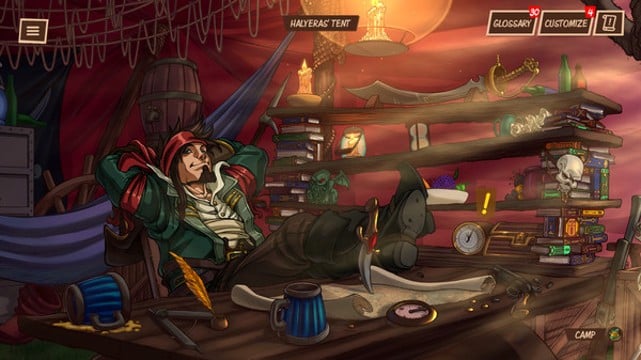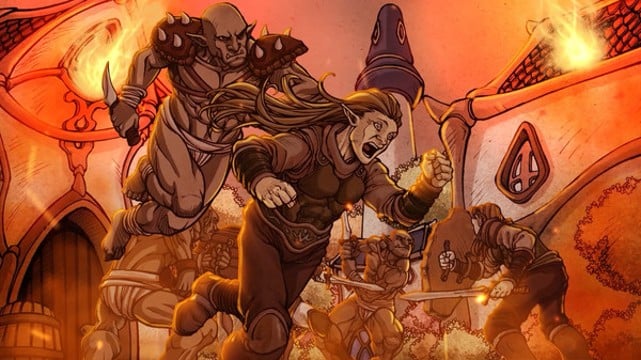Reverie Knights Tactics is a game that takes a lot of inspiration from the masters of the strategy-RPG genre but fails to turn its inspiration into anything truly unique.
Despite being a tactical-RPG, Reverie Knights isn’t a particularly long experience, clocking in at roughly 10 hours. The story isn’t particularly gripping, and the biggest reason is its characters. In every sense of the word, Reverie Knights Tactics is average.
Reverie Knights Tactics Review: A Middling Strategy
You play as a young girl named Aurora, who works for a religious organization called Tanah Toh. An ancient elven city has been taken over and destroyed by goblin forces, and when an expedition sent by Tannah Toh vanishes, Aurora is sent in to find them.
The world of Reverie Knights feels like a strange mish-mash of elements that one would “expect” to be in a fantasy setting. There are evil goblins, standoffish elves, and elusive fairies. There is, of course, elemental magic, too.
The biggest issue is that there’s no context or history given to any aspect of this universe; it’s all just kind of just “there.” The main cast does feel unique, but there’s simply not enough development for them to shine. I would have liked to learn more about each character, their history, and what really makes them tick, but everything just feels far too brief.
The basic format here is similar to other tactical-RPGs like Final Fantasy Tactics or Fire Emblem. You have a main base that you’ll return to while exploring icons on a world map, each of which usually contains a battle. These are broken up by slightly more in-depth dungeons, along with a handful of side objectives. Battles play out on a grid, with your team and the enemy team taking turns. Your team will always go first, except in battles where the enemy ambushes you and takes the advantage.
There are four playable characters, with the second two joining you partway through your journey. Each character has a particular role that they fill; Aurora is a ranged magic user; Brigandine is a high defense knight; Fren is a fast-moving attacker; and Hellaron is your healer support.
One of the more unique aspects of combat is a variety of obstacles and objects scattered around each of the maps. For example, you might be able to push enemies into a bear trap for extra damage or blow up a hot cauldron to damage anyone around it. This helps make battles feel more dynamic, even if it does feel a bit gimmicky.
As your characters level up, you’ll unlock new skills, with three that can be equipped at any one time. Outside of points to equip stats, that’s essentially the only kind of progression. There are a couple of other elements that tie in as well, like crafting healing items, traps, and bombs.
Even with these options, however, combat quickly grows stale, as you’re essentially performing the same actions and fighting mostly the same enemies over and over. This is only underlined by a strange design decision: your character’s HP doesn’t heal after each battle. There are specific points in the story that restore your HP and MP, but otherwise, you’ll need to blow through your healing items to keep your party healthy.
It’s a baffling decision that feels like it makes the game unnecessarily difficult, and oftentimes tipped against you. What’s even stranger, then, is the wild difficulty spikes. With a three-character party, things are tremendously difficult before getting your fourth character, then the difficulty nosedives after recruiting them, before spiking back up again near the end of the game.
While battles and dialogue make up most of Reverie Knights Tactics, there are occasional minigames, which are the worst parts of the game. Reverie Knights has a truly dreadful lockpicking minigame, and one puzzle that has you changing electric currents feels particularly obtuse and poorly explained.
In terms of graphics and sound, Reverie Knights feels fairly average in both departments. The art style can be hit or miss; a lot of environments look vibrantly colorful and filled with tiny details. On the other hand, some characters look uninspired and even ugly in some aspects, with some strange designs and animations that just don’t mesh with the overall aesthetic.
I also never got a firm sense of if the game was going for a more cartoony or stylistic design. However, the battle animations are a bright spot; many of the spell effects and combination attacks add some fun visual flair.
The soundtrack is of higher quality, as combat music does a good job of amping things up with some electric guitar and rock themes.
Reverie Knights Tactics Review — The Bottom Line
Pros
- Each party member feels unique and distinct.
- Interesting cast, even if they don’t get enough time to shine.
- Catchy battle music.
Cons
- Story and characters aren’t given room to breathe.
- Combat and enemy variety grows stale.
- No healing after battle feels entirely unnecessary.
- Frustrating and obtuse puzzle design.
- Art style is hit or miss.
More than anything, Reverie Knights Tactics feels like the start of something bigger. There’s a solid combat system and story that just doesn’t get enough time to breathe and improve.
Outside of some frustrating puzzles, playing Reverie Knights Tactics is not a negative experience — it’s just one that feels far too average and uninspired, like a piece of bread with no butter.
[Note: 40 Giants Entertainment provided the copy of REverie Knights Tactics used for this review.]











Published: Jan 24, 2022 10:46 pm